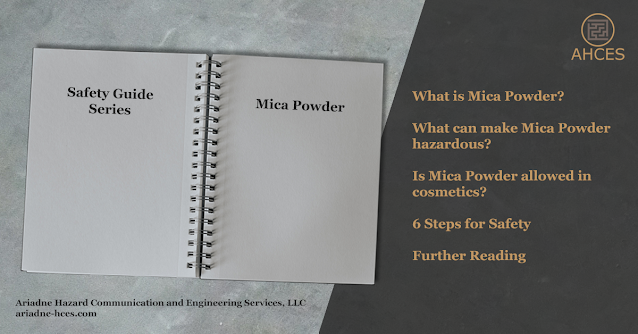FAQ Friday - October 2023
This FAQ Friday is focused on questions about hazardous chemical definitions.
If you have any hazard communication questions or safety questions about common chemicals, ask in the comments below or send an email to contact@ariadne-hces.com.
What is the Difference Between a Hazardous Chemical and a Hazardous Material?
Both Hazardous Chemical and Hazardous Material have technical definitions within government regulations.
Hazardous chemical means
any chemical which is classified as a physical hazard or a health hazard, a
simple asphyxiant, combustible dust, pyrophoric gas, or hazard not otherwise
classified.
29 CFR 1910.1200(c) “Hazardous chemical”
Hazardous material means
a substance or material that the Secretary of Transportation has determined is
capable of posing an unreasonable risk to health, safety, and property when
transported in commerce, and has designated as hazardous under section 5103 of
Federal hazardous materials transportation law (49 U.S.C. 5103). The term
includes hazardous substances, hazardous wastes, marine pollutants, elevated
temperature materials, materials designated as hazardous in the Hazardous
Materials Table (see 49 CFR 172.101), and materials that meet the defining
criteria for hazard classes and divisions in part 173 of subchapter C of this
chapter.
49 CFR 105.5 “Hazardous material”
The term “hazardous chemical” is used in OSHA regulations pertaining to occupational health and safety at the workplace. The term “hazardous material” is used in PHMSA regulations pertaining to the transportation of materials which can pose a danger during transport.
Are All Chemicals Hazardous?
Not all chemicals meet the technical definition of being a hazardous chemical or hazardous material as listed above.
A classic example is common salt or sodium chloride. In normal uses as a seasoning, table salt is safe. However, if a person consumes a large amount of salt, they could get very ill. That does not make salt a hazardous substance, because it does not have a qualifying toxicity value.
Additionally, some materials may meet the definition of
being a hazardous chemical but not meet the definition of a hazardous material.
An example of this is titanium dioxide, which is a health hazard for the
purposes of a hazardous chemical, but is not hazardous for transportation and
therefore is not a hazardous material.





Comments
Post a Comment